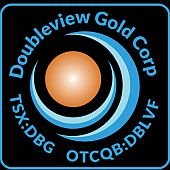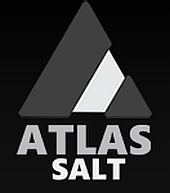 Pan Global drills 15 m of 1.2% Cu at Escacena
Pan Global drills 15 m of 1.2% Cu at Escacena
2023-04-19 01:25 ET – News Release
Mr. Tim Moody reports
PAN GLOBAL INTERSECTS 15 METERS OF 1.2% COPPER, 0.05% TIN, AND 5.4 G/T SILVER AT LA ROMANA, IN THE ESCACENA PROJECT, SPAIN
Pan Global Resources Inc. has released assay results for its continuing diamond drilling at La Romana copper-tin-silver discovery and results for the first three drill holes at the Romana Deep target at the company’s 100-per-cent-owned Escacena project in the Iberian pyrite belt, southern Spain.
“The near-surface high-grade copper, tin and silver results reported today confirm the continuity of the La Romana mineralization and highlight the potential to improve the overall grade with further infill drilling,” said Tim Moody, Pan Global’s president and chief executive officer. “Planned testing of the strike extensions of the gravity and electrical geophysics targets east and west of the La Romana discovery is expected to further expand the area of mineralization.
“Exploration drilling at the Romana Deep target revealed an 80-metre-plus zone of alteration similar to that associated with mineralization at La Romana. The first three holes encountered multiple narrow intercepts of high-grade copper mineralization up to 1.0 metres thick grading 1.1 per cent to 3.8 per cent Cu and up to 0.43 per cent Sn and 55 grams per tonne Ag. The frequency of thin bands of massive and semi-massive sulphide and alteration intensity indicate an encouraging vector with increasing copper towards the east, providing a guide for follow-up drilling.”
Drill results are summarized in the attached table.
La Romana
Drilling highlights:
- LRD145: 15 metres at 1.2 per cent copper, 0.05 per cent tin and 5.4 grams per tonne silver from 74 metres, including:
- 7.8 m at 1.9 per cent Cu, 0.07 per cent Sn and 8.8 g/t Ag (includes 0.4 m at 16.1 per cent Cu, 0.08 per cent Sn and 68.1 g/t Ag);
- LRD142: 22 m at 0.7 per cent Cu, 0.07 per cent Sn and 3.1 g/t Ag from 40 m, including:
- 12 m at 1.1 per cent Cu, 0.13 per cent Sn and 5.0 g/t Ag;
- LRD144: 22 m at 0.5 per cent Cu, 0.05 per cent Sn and 2.9 g/t Ag from 50 m, including:
- Seven m at 1.0 per cent Cu, 0.13 per cent Sn and 4.6 g/t Ag;
- LRD143: 70.85 m at 0.33 per cent Cu, 0.03 per cent Sn and 2.3 g/t Ag from 57 m, including:
- Six m at 1.1 per cent Cu, 0.01 per cent Sn and 5.2 g/t Ag, 0.6 m at 1.9 per cent Cu, 0.12 per cent Sn and 10.8 g/t Ag, 1.0 m at 1.1 per cent Cu, 0.04 per cent Sn and 6.4 g/t Ag, and 0.6 m at 1.7 per cent Cu, 0.11 per cent Sn and 9.4 g/t Ag.
The new drill results at La Romana intersected high-grade copper (Cu) in four of the five drill holes targeting electromagnetic (EM) anomalies within the drill area. Together with previous drilling, the results further demonstrate good continuity of the mineralization and the potential for additional infill drilling to have a positive impact on the overall grade at La Romana. Drill holes LRD142 and LRD145 delivered the highest-grade Cu, tin (Sn) and silver (Ag) intersections compared with previous drilling on the same north-south section. Hole LRD143 returned one of the widest intersections reported at La Romana with 0.33 per cent Cu over 70.85 m, including six m at 1.1 per cent Cu plus additional narrow high-grade Cu-Sn-Ag intersections.
Results are pending for a further five stepout drill holes targeting EM anomalies and downdip projections of La Romana mineralization. An additional 10 drill holes are planned to test a gap in the drill pattern, previously inaccessible due to farm infrastructure, for additional high-grade copper mineralization. These holes will also test the potential for additional near-surface supergene-enriched chalcocite mineralization. Additional holes will test the continuity of tin mineralization and provide samples required for the tin metallurgy testwork program. Drilling of the untested western strike projection of La Romana mineralization is planned pending access.
Romana Deep
The three drill holes tested a heliborne EM anomaly at Romana Deep, and each intersected more than 80-metre-thick zones of chlorite and sericite alteration with multiple thin bands of massive and semi-massive sulphide with high copper grades. The drilling shows alteration and associated copper mineralization extending from 300 m to more than 600 m downdip from the near-surface La Romana mineralization. The results for drill holes RDD02 and RDD03 indicate the heliborne EM anomaly in this area is potentially related to an upper copper mineralized horizon, approximately 100 m stratigraphically above the main La Romana copper mineralization.
The drill results also highlight a vector to the east, characterized by increasing intervals of semi-massive and massive sulphide toward the east and anomalous copper over a wide interval in hole RDD01, the easternmost hole. Follow-up drilling at Romana Deep will be planned on completion of additional geophysics to help identify potentially thicker zones of high-grade mineralization and potential to the east.
High-grade intercepts at Romana Deep include:
- RDD01: 73.6 m at 0.13 per cent Cu from 454.2 m, including:
- 0.25 m at 1.7 per cent Cu and 9.9 g/t Ag from 456.30 m;
- 0.20 m at 3.5 per cent Cu and 11.2 g/t Ag from 460.90 m;
- 0.20 m at 1.1 per cent Cu and 5.6 g/t Ag from 493.60 m;
- 0.35 m at 2.4 per cent Cu and 9.1 g/t Ag from 497.45 m;
- 0.25 m at 3.8 per cent Cu, 29.8 g/t Ag and 0.15 g/t gold from 513.85 m;
- 0.40 m at 1.6 per cent Cu and 3.9 g/t Ag from 527.40 m;
- RDD02: 1.0 m at 1.4 per cent Cu and 10.2 g/t Ag from 310.0 m:
- 0.5 m at 1.2 per cent Cu, 5.7 g/t Ag from 369.75 m;
- 0.6 m at 3.0 per cent Cu, 55.3 g/t Ag from 561.65 m;
- 1.0 m at 1.3 per cent Cu, 7.4 g/t Ag from 565.00 m;
- RDD03: 1.0 m at 1.1 per cent Cu, 0.43 per cent Sn and 4.3 g/t Ag from 513.00 m.
 |
Drilling is continuing in the Escacena project at La Romana and Zarcita targets, and is due to commence at the Canada Honda target approximately five kilometres north of La Romana targeting geophysics targets adjacent to historical mine workings. Results are pending for approximately 15 drill holes at La Romana and Zarcita. Negotiations are progressing with landowners for access to the untested potential near-surface extensions to La Romana mineralization.
Quality assurance/quality control procedures
Core size was HQ (63 millimetres), and all samples were one-half core. Nominal sample size was one-metre core length and ranged from 0.4 to two m. Sample intervals were defined using geological contacts with the start and end of each sample physically marked on the core. Diamond blade core cutting and sampling were supervised at all times by company staff. Duplicate samples of one-fourth core were taken approximately every 30 samples, and certified reference materials were inserted every 25 samples in each batch.
Samples were delivered to ALS laboratory in Seville, Spain, and assayed at the ALS laboratory in Ireland. All samples were crushed and split (method CRU-31, SPL22Y) and pulverized using method PUL-31. Gold analysis was by 50-gram fire assay with ICP finish (method Au-ICP22), and multielement analysis was undertaken using a four-acid digest with ICP AES finish (method ME-ICP61). Tin was analyzed in selected intervals using lithium borate fusion and ICP MS finish (method ME-MS81). Overgrade base metal results were assayed using a four-acid digest ICP AES (method OG-62). Overgrade tin was determined using peroxide fusion with ICP finish (method Sn-ICP81x).
About the Escacena project
The Escacena project comprises a large, contiguous, 5,760-hectare land package controlled 100 per cent by Pan Global in the east of the Iberian pyrite belt. The project is located near operating mines at Las Cruces and Riotinto, and is immediately adjacent to the former Aznalcollar and Los Frailes mines, where Minera Los Frailes/Grupo Mexico is in the final permitting stage with construction anticipated to restart in 2023. The Escacena project hosts La Romana copper-tin discovery and a number of other prospective targets, including Zarcita, Hornitos, La Jarosa, Romana Deep, Bravo, Barbacena, El Pozo and San Pablo.
About Pan Global Resources Inc.
Pan Global is actively engaged in base and precious metal exploration in southern Spain, and is pursuing opportunities from exploration through to mine development. The company is committed to operating safely and with respect to the communities and environment where it operates.
Qualified person
James Royall, vice-president, exploration, for Pan Global, a qualified person as defined by National Instrument 43-101, has reviewed the scientific and technical information for this news release. Mr. Royall is not independent of the company.
We seek Safe Harbor.
https://www.panglobalresources.com/






























